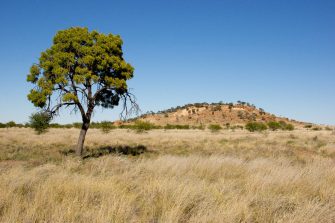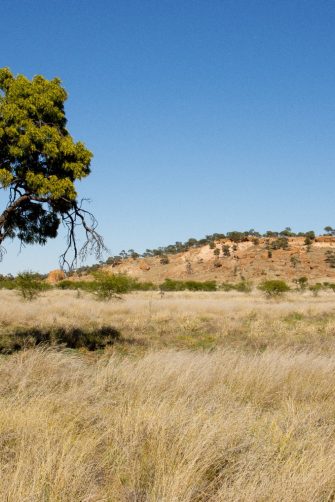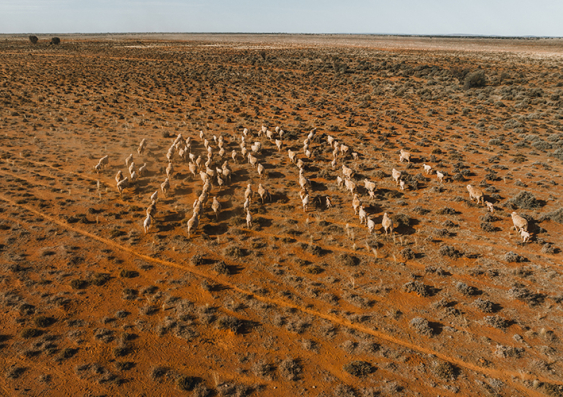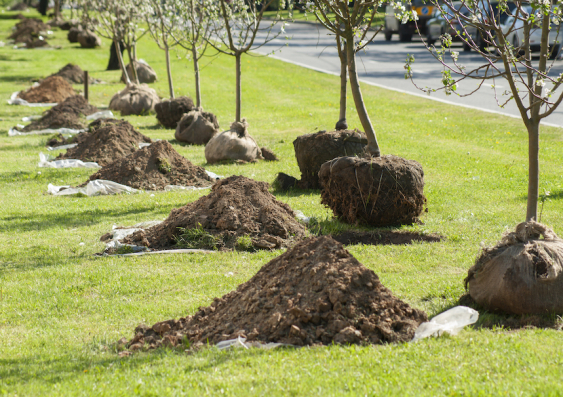Providing carbon credits for allowing native forests to regrow on previously agricultural land is a key program of the Australian government to meet climate change targets. It's not working.
One of the largest types of carbon offset projects the Australian government is using to meet climate change targets and reduce carbon in the atmosphere is failing to do so, new research has shown.
The projects aim to regenerate native forests across large parts of Australia, but analysis shows most of the selected areas have never had forests, are unsuitable for forest regeneration and are not producing the increase in tree canopy cover that projects are being credited for.
Researchers from UNSW and the Australian National University (ANU) examined human-induced forest regeneration (HIR) projects, which are the largest nature-based pure carbon removal offset projects in the world, and found serious flaws and widespread non-compliance.
One of the study’s lead authors, UNSW Canberra’s Dr Megan Evans, opens in a new window, said the findings pointed to “such huge failures that it’s almost beyond belief”.
Media enquiries
For media enquiries about this story and interview requests, please contact Elliot Williams, Media Officer, UNSW Canberra.
Phone: +61 2 5114 5149
Email: elliot.williams@unsw.edu.au

The HIR projects are intended to allow native forests to regrow, by ceasing routine agricultural clearing or by reducing grazing and removing feral animals. In turn, the regenerating forests would sequester carbon from the atmosphere. Companies and farmers can then receive credits based on how much carbon dioxide is assumed to have been removed or prevented from entering the atmosphere.
The projects cover 42 million hectares – an area significantly larger than Japan – and, to date, they have received more than 45 million Australian carbon credit units (ACCUs). This represents 30% of all ACCUs issued under the Australian carbon offset scheme, worth approximately $1 billion.
The research team used satellite imagery – the same imagery that the Clean Energy Regulator considered in a recent review – to determine the amount of tree cover present in credited areas across the country. They broke the land up into smaller “cells” and compared them to similar cells from neighbouring areas to determine if forest regeneration had been accelerated due to the HIR projects.
What the researchers found was that across land from 116 HIR projects there had been a negligible impact on tree cover and carbon sequestration and that the majority of projects did not comply with the regulations set out by the federal government.
Analysis showed that 95% of the credited areas were located on land that had never been properly cleared, meaning the projects are trying to regenerate native forests on land which may have never contained forests. Conversely, 29% of the credited area had forest cover when the projects started, meaning they are trying to regenerate native forests on land that already has forest cover.
Most of the increases in tree cover could be explained by natural processes such as increased rainfall over the La Niña years of 2020-2023, rather than human activity that the projects received credits for.
There was a significant disparity between the amount of carbon sequestration that was credited to projects and the amount of tree cover observed. For the amount of carbon credits issued across the various projects you would expect there to be a minimum of 30% canopy cover across the corresponding land; instead there was only 13%.
Dr Evans said the findings highlight a significant missed opportunity to restore previously cleared biodiversity-rich woodlands and forests via legitimate carbon offset projects.
“A decade ago, there was great hope that carbon markets could cost-effectively restore biodiversity where it has been destroyed by clearing, largely in Australia’s agricultural zones,” she said.
“Now, we’re seeing that 95% of the places being paid to restore forests occur in largely remote inland areas that have never actually been cleared of forests.
Our new findings point to such huge failures that it’s almost beyond belief. Unfortunately, we expect that government and industry will simply respond by saying we’ve got it wrong, we’ve used the wrong data, and continue to deny there is a problem.
UNSW Sydney academic Dr Kristen Hunter contributed to the statistical analysis of the research project, she said that the gap between observed and credited canopy cover changes was too large to be explained by any inaccuracies in satellite imagery.
“A positive statistical effect doesn’t necessarily equate to good project performance,” she said. “We found the amount of carbon sequestration credited to the projects did not correspond to actual changes in tree cover.”
Professor Don Butler from the ANU said the results point to major administrative failings in Australia’s carbon credit scheme.
“The Clean Energy Regulator’s administration of Australia’s carbon credit scheme has let us all down terribly,” Professor Butler said.
“They’ve used hundreds of millions of dollars of public money to build a house of cards that is enabling climate inaction and will render the Safeguard Mechanism, opens in a new window ineffective. The failure of this scheme will only become more obvious as time goes on.”
The findings are published in The Rangeland Journal. The paper can be accessed at: https://doi.org/10.1071/RJ24024, opens in a new window








